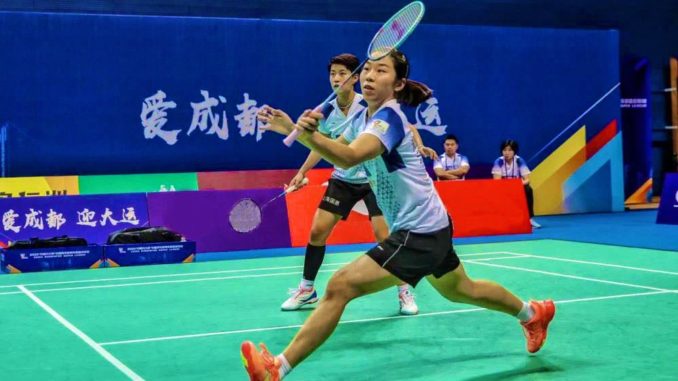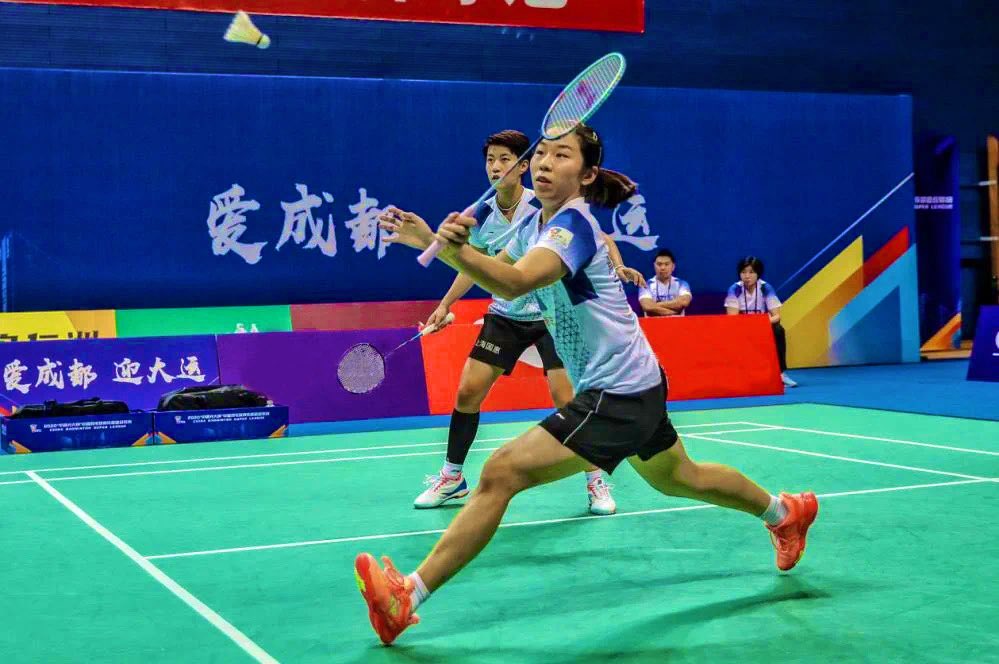
Badminton, a sport that combines agility, strategy, and lightning-fast reflexes, is not only a visual spectacle but also a symphony of sounds that captivates players and spectators alike. From the rhythmic shuttlecock rallies to the resonating echoes of powerful smashes, the sounds of badminton create a unique auditory experience on the court.

The Sonic Symphony of Badminton: A Harmony of Speed, Precision, and Power
In badminton, a variety of sounds contribute to the overall auditory experience on the court. Here is a list of the types of sounds commonly found in badminton:
- Shuttlecock Impact:
- Thwack: The sound produced when the shuttlecock makes contact with the strings of the racket, often associated with shots like drop shots or clears.
- Racket Strings:
- Swoosh: The swishing sound as the racket moves through the air, especially noticeable during fast swings or defensive maneuvers.
- Rally Sounds:
- Tap: The rhythmic sound of players volleying the shuttlecock back and forth during a rally, creating a lively and continuous tapping noise.
- Footwork:
- Squeak: The sound of rubber-soled shoes gripping the court surface as players move swiftly and change directions, showcasing agile footwork.
- Net Interaction:
- Tick: The gentle tapping sound when the shuttlecock grazes the top of the net during a net shot or when a player reaches for a close-to-the-net play.
- Smash Impact:
- Thud: The powerful and resounding sound produced when a player executes a smash, hitting the shuttlecock with force and speed.
- Court Coverage:
- Shuffle: The quick and rhythmic shuffling sounds as players cover the court, adjusting their positions to respond to the shuttlecock’s movement.
- Racket Clashes:
- Clack: The sound that occurs when rackets accidentally collide during a rally, often accompanied by a momentary pause in play.
- Audience Reactions:
- Cheers, Gasps, Applause: The dynamic sounds of spectators reacting to the game, providing an additional layer to the overall auditory experience.
- Player Communication:
- Calls: Verbal sounds made by players to communicate with each other during doubles play, ensuring coordination and avoiding collisions.
- Court Surfaces:
- Bounce: The sound of the shuttlecock bouncing on the court surface, especially noticeable during serves or when the shuttlecock lands after a shot.
- Umpire Whistle:
- Whistle: The distinct sound made by the umpire’s whistle to signal the start, stop, or pause of a match.
These diverse sounds collectively form the unique auditory landscape of badminton, adding depth and excitement to the overall experience of the game.
Where To Download Badminton Sounds
These badminton sounds can be downloaded for free at many sites such as Envato Elements and Videvo.
How to Get The ‘Boom’ Sound In Badminton
Here’s how you can generate a “boom sound” in badminton:
- Master the Smash:
- The smash is the most powerful shot in badminton and is likely to produce the desired “boom sound.” Focus on perfecting your smash technique, ensuring a combination of power and precision.
- Use a Controlled Grip:
- Grip the racket firmly but with control. Avoid excessive tension in your grip, as it may hinder your ability to generate speed and power in your swing.
- Explosive Footwork:
- Engage in explosive footwork to get into a good position for your smash. A well-timed and dynamic approach to the shuttlecock will contribute to the overall power of your shot.
- Leverage Body Rotation:
- Incorporate your entire body into the shot by using efficient body rotation. The power for a booming smash comes not just from your arm but from the coordinated movement of your hips and shoulders.
- Aim for the Sweet Spot:
- Striking the shuttlecock with the sweet spot of your racket strings enhances the power and sound of your smash. Practice hitting the shuttlecock consistently in this optimal area.
- String Tension Consideration:
- Experiment with the tension of your racket strings. Some players prefer a slightly looser string tension for a more powerful and resonant impact.
- Follow-Through with Force:
- Allow your racket to follow through with force after making contact with the shuttlecock. A complete and forceful follow-through contributes to the overall “boom sound.”
- Focus on Timing:
- Timing is crucial for a powerful smash. Striking the shuttlecock at the highest point of its trajectory and at the peak of your jump, if applicable, maximizes the impact and sound.
- Practice with Intensity:
- Dedicate specific practice sessions to smashing with intensity. Work on your technique, footwork, and timing to consistently deliver powerful and impactful shots.
- Conditioning and Strength Training:
- Improve your overall strength and conditioning, especially in the muscles used for smashing. Building strength in your arms, shoulders, and core will contribute to more powerful shots.
Remember, achieving a distinctive “boom sound” in badminton often comes from a combination of technique, strength, and timing. Regular and focused practice, along with attention to the details of your smash, will help you develop a powerful and resonant sound on the court.
Baritone Ukulele Tabs and Sheet Music
Stylophone Tabs
Charango Tabs
Melodeon and Diatonic Accordion Tabs
Banjo Tabs
Dulcimer Tabs
Kalimba Tabs
Mandolin Tabs
Dobro Tab
12 Hole Ocarina Tabs, Sheet Music, Scales and Lessons
6 Hole Ocarina Tabs, Sheet Music, Scales and Lessons
